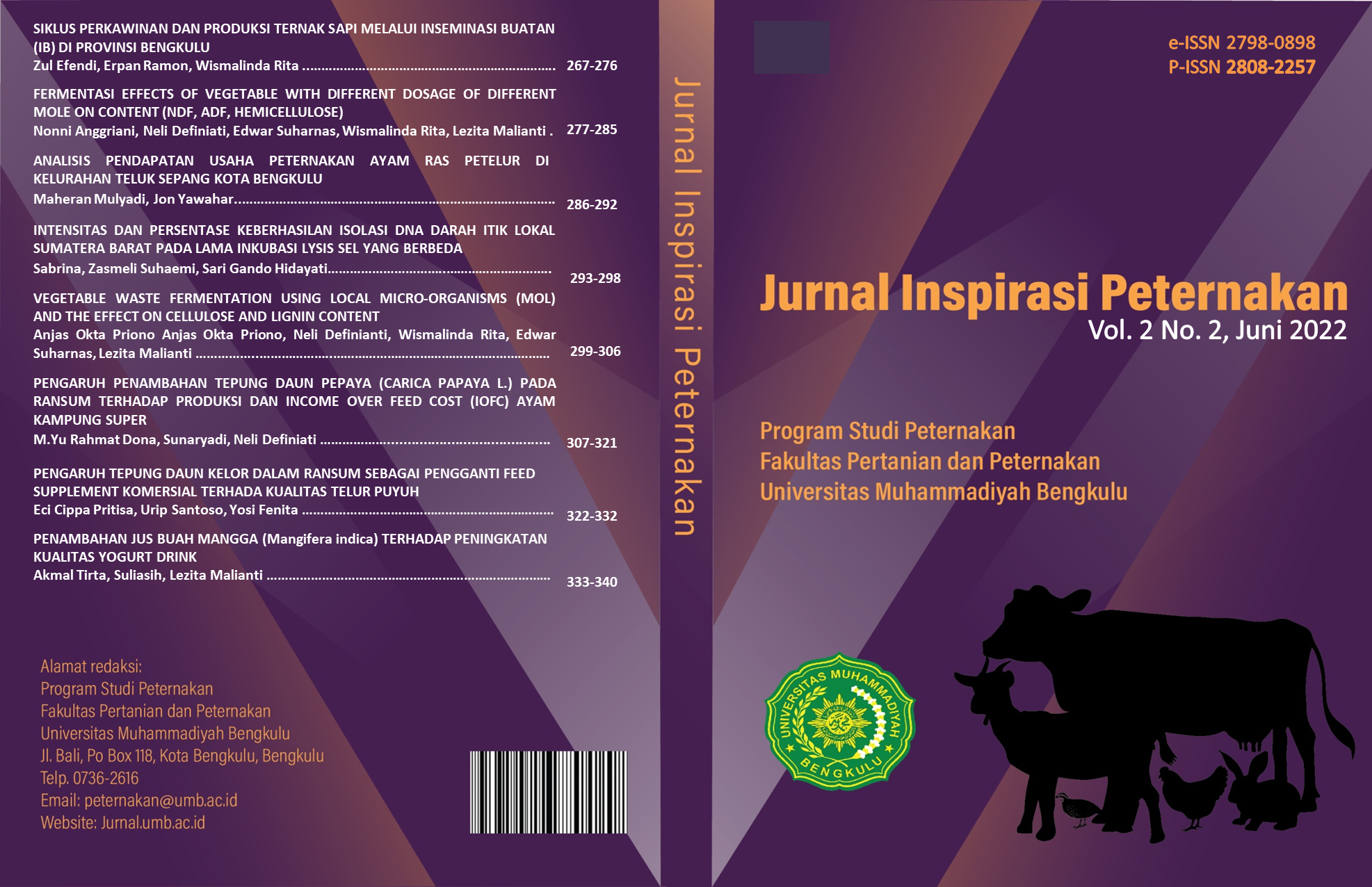Vegetable Waste Fermentation Using Local Micro-Organisms (MOL) And The Effect On Cellulose And Lignin Content
Vegetable Waste Fermentation Using Local Micro-Organisms (MOL) And The Effect On Cellulose And Lignin Content
DOI:
https://doi.org/10.36085/jinak.v2i2.3576Abstract
The purpose of this study was to determine the effect of adding moles to fermented vegetable waste on the cellulose and lignin content by proximate analysis. This research was carried out from August to completion, the manufacture of MOL of vegetable waste was carried out at the Laboratory of the Faculty of Agriculture and Animal Husbandry, University of Muhammadiyah Bengkulu and Proximate Analysis of Cellulose and Lignin Content was carried out at the Laboratory of Dairy Animal Nutrition, Bogor Agricultural University (IPB). This study used a completely randomized design with 4 treatments and 4 replications. Treatment A = vegetable waste is fermented with the addition of 3% MOL, B = vegetable waste is fermented with the addition of 6% MOL, C = vegetable waste is fermented with the addition of 9% MOL and D = vegetable waste is fermented with the addition of 12% MOL. The parameters observed were the fiber content of vegetable waste including cellulose and lignin. The results showed that different mole doses had a significant effect on the cellulose and lignin content. With the addition of different MOL doses in the vegetable waste feed, the cellulose content decreased by 20.4 – 17.99 and the lignin content by 6.81 – 3.52. From this research, it can be concluded that giving different doses of MOL to fermented vegetable waste feed can simplify the bonding of cellulose and lignin so that the content of fermented feed in vegetable waste can be utilized.
Keywords: Vegetable Waste, MOL dose, Cellulose and Lignin content












